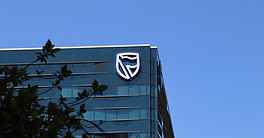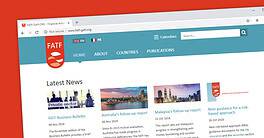Technology investments and strong balance sheets herald the winners of Global Finance’s 29th annual Best Bank Awards.

Most banks worldwide emerged from 2021 far stronger—and with apparently better prospects—than at any year-end since the 2008 financial crisis. Profitability rose dramatically, dividend payments resumed and further share buybacks are anticipated over the coming year.
The Covid-19 pandemic and stringent governmental countermeasures have not triggered a long-lasting economic slowdown or possibly even another financial crisis and global recession, as were initially anticipated. Banks felt confident enough about the global economic recovery to reverse some of the hefty provisions made against bad loans only the year before. These releases fed straight through to the bottom line. The banks had already benefited from massive inflows of savings from customers unable to spend during lockdowns and from corporate clients more concerned about bolstering their cash balances than investing amid Covid-related uncertainties.
The global capital abundance unleashed by central banks and further boosted by governments’ stimulus packages not only propelled market valuations to new heights but also triggered a wave of initial public offerings and merger and acquisition activity, which in turn generated massive fees for advisory and underwriting banks. Even more-mainstream lenders that lacked such investment banking skills could look to improved net interest income in times to come, as central banks begin raising base rates to combat inflation. As of December 2021, the outlook for most banks was better than it had been for decades.
The global banking system had faced enormous challenges in adapting to changed circumstances, having to build operational systems that allowed staff to work remotely and continue servicing clients, over the previous 18 months. And as a result of Covid-induced changes in customer behavior, notably the switch from cash to electronic or digital transactions and broader acceptance of remote or automatic advisory services, the digital transformation that was already taking place in most banks accelerated remarkably.
As this is likely to be a permanent trend, banks that have invested well in the appropriate digital technologies stand to reap the long-term benefits of enhanced efficiency and significant cost savings—and, through a far greater scope for data harvesting, a better understanding of their customers’ needs, enabling more-targeted sales initiatives. Hence, it is noticeable that banks that led the way in digital transformation feature prominently among Global Finance’s Best Banks this year.
Another critical factor is scale. A high proportion of our country winners are either the largest bank or the market leader in the fastest-growing and most-profitable segments. That is because being the leader in a country almost always enhances efficiencies, which usually translates into a higher return on equity than can be achieved by smaller players.
According to McKinsey’s Global Banking Annual Review 2021, the size of this return-on-equity premium varies among regions, running at between 400 and 450 basis points in Asia and Latin America. At the same time, the difference is proportionately less in more-developed economies. “In Europe, both large banks and small specialized players outperform midsize banks,” writes the authors of the review, with the big banks enjoying a greater advantage in cost efficiency compared to smaller rivals than is the case in other major economies such as the US or China.
Tech Tells the Tale
It is expected that the advantage of market leaders will increase further as banks compete in technology, given that IT investments are a fixed cost that works out cheaper over a larger asset or revenue base and delivers correspondingly higher benefits continually.
The global pandemic has effectively forced banks to push the “fast-forward” button on digital transformation. During 2021, the competitive advantage of those who embraced change over the laggards became increasingly evident in how new customers were acquired, onboarded and then kept loyal through successive improvements to the customer experience, made possible by the deployment of back-office automation and enhanced data harvesting and analytics.
More banks seek to gain a technological edge—by partnering with fintechs or more-specialized consultants—in intelligent process automation and hyperpersonalization. They are investing in payment innovations such as hybrid wallets. In addition, banks are increasingly moving toward open-banking application programming interfaces and shedding their reluctance to migrate more of their critical functions from legacy on-premised IT systems to the cloud.
Here, the question of “ownership” fuses with concerns over cybersecurity—another area where investment is set to continue growing. Trust in an external ecosystem continues to be a sticking point. A 2020 Cloud Security Alliancestudy found that 91% of financial institutions were using the cloud for some services, but study done by Information Age that year found that only 9% migrated their mission-critical and regulated banking operations. The development of hybrid cloud computing that allows banks to store sensitive information safely while still being able to scale up may help overcome such misgivings.
Although larger banks are better placed to make such investments and more likely to recoup the costs more quickly, advanced analytics also allow them to target and service fast-growing and profitable segments more effectively. Whereas average banking revenues from low- to middle-class households have stagnated over the past two decades, revenues from self-employed entrepreneurs have grown to more than four times that of the average customer. Banking relationships with small and midsize enterprises are also highly profitable, though credit quality is highly variable. Those banks armed with the technology to identify and monitor these opportunities will be able to dominate highly profitable market segments.
A One-Two Punch for Banks
More immediately, the optimism expressed by most banks as they reported their 2021 results largely evaporated as a result of the Russian invasion of Ukraine and the subsequent imposition of international sanctions. If the Covid crisis made banks push the fast forward button on digitalization, a major war in Europe pushed another one labeled “Back to the Future,” with the new normal geopolitically resembling a return to the Cold War accompanied by energy and food price shocks to fuel already high levels of global inflation.
The Western alliance’s imposition of financial sanctions and the exclusion of Russian entities from the Swift international payment-messaging system has been likened to a weaponization of the global financial system, the full ramifications of which are yet unclear. European banks, particularly those in neighboring countries or those French, Italian and Austrian banks with significant exposures to Russia, are most directly affected. Bank for International Settlements data suggests that European banks have a combined exposure of $84 billion, or just over two-thirds of the total $121 billion owed by Russian entities to international banks.
But the indirect impacts through a bank’s corporate and individual customers with Russian interests spread much wider. So too does the likely reversal of globalization, with companies seeking to shorten supply chains and placing a premium on the security of supply over relative cost. With every sector from industrials to agriculture braced for further supply shocks, and with inflation rising worldwide, earlier forecasts of global recovery are being revised downward.
As the CEO of JPMorgan Chase, Jamie Dimon, warned last month in his annual letter to shareholders, “The war in Ukraine and the sanctions on Russia, at a minimum, will slow the global economy—and it could easily get worse.”
Today, most banks worldwide are far better capitalized than before the 2008 financial crisis. Moreover, even those most severely affected have balance sheets strong enough to absorb losses arising directly from Russia’s aggression. Nevertheless, the extent of the broader fallout on the international banking system from this military conflict remains to be seen.
Methodology: Behind the Rankings
With input from industry analysts, corporate executives and technology experts, Global Finance editors select the winners for the Best Bank awards using the information provided in entries and independent research based on both objective and subjective factors. It is not necessary to enter to win, but materials supplied in an entry can increase the chance of success. Entrants may provide details that are not publicly available.
Judgments are based on performance from January 1 to December 31, 2021. Then, we apply an algorithm to shorten the list of contenders and arrive at a numerical score, with 100 equivalent to perfection. The algorithm incorporates criteria—including knowledge of local conditions and customers, financial strength and safety, strategic relationships, capital investment and innovation in products and services—weighted for relative importance.
Once we have narrowed the field, our final criteria include the scope of global coverage, size of staff, customer service, risk management, range of products and services, execution skills and smart use of technology. In the case of a tie, our bias leans toward a local provider rather than a global institution. We also tend to favor privately owned banks over government-owned institutions. The winners are those banks that best serve the specialized needs of corporations as they engage in global business. The winners are not always the biggest, but the best: those with qualities that companies should look for when choosing a provider.



